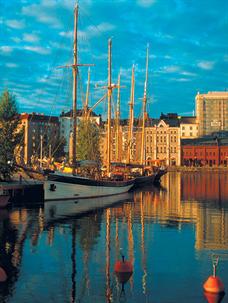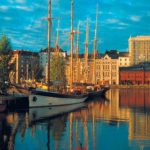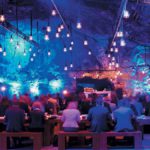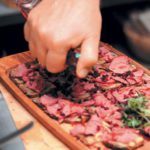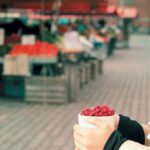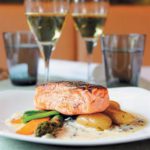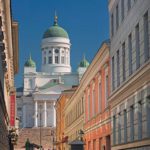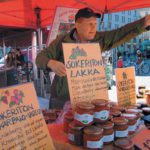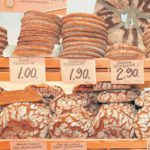Scandinavian countries top the charts as the best places to live. JUDY BRYANT found the Finnish food as genuine as its people
Since the Finnish capital of Helsinki was named World Design Capital for 2012, thousands of visitors from all over the world have been exposed to its unpretentious yet delicious food. The country’s cuisine is based on the freshest natural ingredients, seasonality, simplicity and purity of taste. With a pantry that includes the Baltic Sea, 188 000 lakes, wide swathes of birch forests and montane grazing, key ingredients are fish, game (reindeer and moose, wild duck and wood pigeon), mushrooms and a huge variety of wild berries.
Finnish cooking has traditionally been on the rustic and robust side, full of hearty, warming stews and soups.
It’s influenced by both east and west – the country formed part of Sweden from the 12th to 19th centuries, and between 1809 and 1917 it was an autonomous Grand Duchy of Russia.
Many of the new generation of Finnish chefs have travelled widely and worked abroad, and are using their experiences to fuse traditional ingredients with a lighter touch. Menu descriptions are typically understated, but the deft skill is evident in the taste. A stew may offer a mix of meats but each morsel retains its distinct flavour.
Traditional dishes include roasted salmon with new potatoes and a country salad, roast reindeer in sea buckthorn butter, grilled guinea fowl in a wild berry or rhubarb sauce, and moose meatballs in a creamy rosemary sauce. Young nettle buds are collected in spring and early summer and used in everything from soup to waffles.
Strong-tasting rye bread goes wonderfully with the smoked reindeer or elk salamis and local cheeses. Wild berries
accompany main courses as well as being used in desserts. The Arctic cranberry, known as lingonberry, makes for excellent jam or compote, while the tartness of bright orange or yellow cloudberries beautifully complements game.
The Helsinki food scene is taking off, supported by a far-sighted municipal food culture strategy, linked to an ambitious urban renewal policy and an influx of design tourists. Old market halls and seaside factory buildings, whose beautiful wooden beams and floorboards have been hidden under cobwebs for decades, are being sensitively re-invented for atmospheric restaurants, galleries and working spaces.
One of the most interesting new food locations is Tukkutori, an industrial wholesale food and beverage area. Its market dates back to the 18th century, and in the 1930s the most modern abattoir in Europe was established in
its red-brick buildings. These are being adapted for mixed-use developments; while sectors of Tukkutori will remain in use by the wholesale trade, restaurants, markets and cafés will attract those who simply enjoy buying unusual ingredients or discovering new restaurants. It’s redolent of Manhattan’s Meatpacking District, where fashion and graphic designers, architects and creative industry corporate headquarters have moved in.
On my visit, during Helsinki Design Week, we were treated to dinner in a former abattoir building, which still had large steel doors and roof trusses overhead. It was modestly decorated with long wooden tables and benches, and the main dish was a simple, fragrant stew. I found it a little too reminiscent of its earlier incarnation, but this was simply a pop-up event and, with time and good design, the area will soon be a must-see.
Helsinki’s centrally situated Design District is another area where restaurants are springing up, alongside clothing and furniture shops, galleries and workshops. It’s a wonderful place to discover everything from a designer cocktail bar to an easy-going neighbourhood restaurant or sushi bar.
An unusual food location is the Turntable urban garden, where a former locomotive engine turntable is the foundation of a modern greenhouse oasis of urban gardening. Run by an NGO, fresh food is grown in everything from discarded supermarket trollies to old shopping bags. During my visit we enjoyed food that had just been picked and prepared: vegetable soup and freshly baked bread, salads, beetroot and hemp hummus. It was served on a long wooden table in the large, warm greenhouse, the walls clad in tomato plants that seemed to be surging up to the roof on a vitamin tide.
My most unusual food experience, however, wasn’t a pop-up café but rather the world’s first pop-down restaurant. Chef Timo ‘Lintsi’ Linnamäki from Muru, the 2012 Finnish restaurant of the year, set up a makeshift restaurant down an old working limestone mine for 10 food events.
These were made possible by a wonderful collaboration of partners – starting with Kone, which tests its highspeed lifts in an old shaft at the mine. My descent was certainly a lot cleaner and smoother than an earlier visit down a Joburg gold mine – although we were fortified by a take-no-prisoners, ice-cold Finlandia Vodka, artfully mixed with a lavender and flower reduction.
Iconic table and glassware firm iittala used the occasion to showcase its latest range of embossed plates in soft muted tones, and its new range of drinking glasses was filled with great vintages by a wine importer. Add a professional kitchen equipment supplier, energyfriendly lighting, a coffee importer and even a suave four-man local jazz band, and we had all the ingredients for a culinary night to remember.
The four-course meal (80 metres below ground) began with salted salmon seasoned with cumin, with a mustardaquavit sauce, and crayfish and potato salad with cucumber. The entrée was a fennel risotto with escargot flambéed in Pernod, and the main course was roasted veal and steak simmered in a herb stock.
On a smaller scale, Helsinki started a Restaurant Day in the build-up to the design year. For once, municipal by-laws were ignored. The locals prepared and sold everything from homemade bread (lowered in a basket from a third-storey apartment) to homemade soup, served in bowls bought by customers at a nearby open-air market. It’s now a regular event – in Helsinki, and in other capitals too. Whatever the time of year, you’re assured of delicious food. The pedestrian-friendly city offers everything from traditional cuisine to artisanal chocolates.
A favourite meeting place is the Restaurant Kappeli, once the site of a confectioner’s booth that sold pastries and lemonade, and where dishes now honour Finnish artists and writers.
Two of my finest meals, however, were also the simplest: a wedge of the freshest salmon, cooked in front of me at the Kauppatori seaside market, served with new baby potatoes and vegetables. Washed down with a large cold lager, in the company of seabirds and market traders, it totalled €13 (about R150) and was quite delicious. And after a Sunday morning walk, I joined a queue of canoeists and cyclists for hot chocolate and a pastry at Café Regatta. This tiny little red and white hut was once a fishermen’s shed, and is now a warm and cosy venue crowded with decorations like musical instruments, pictures and photos. Fresh berries at the Hakaniemi Market Salmon at the Hotel Helka Tucking into unpretentious, fabulous food underground A platter of fine cold meats.

